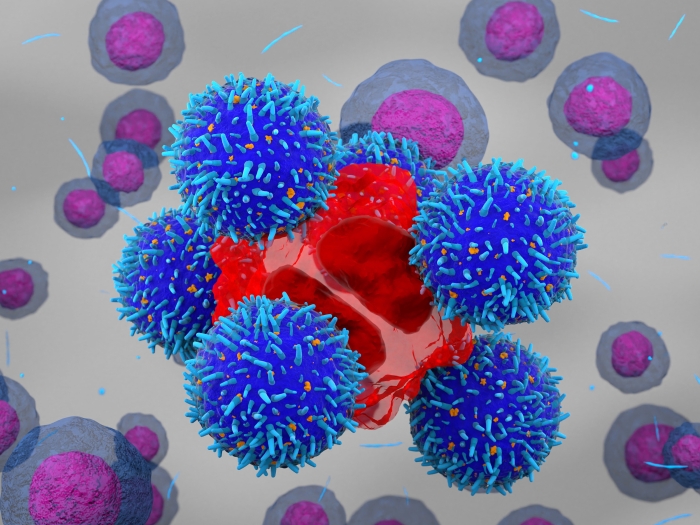Innovative strategy allows artificial circuit to safely support premature sheep without anticoagulation
12:30 PM
Author |

For nearly two decades, Michigan Medicine researchers have been developing an “artificial placenta,” an extracorporeal system which replicates the fetal environment and could someday improve care for extremely premature infants.
But they’d faced a major hurdle: managing the delicate balance between bleeding and clotting without thinning the blood with heparin. Although heparin is routinely used in extracorporeal membrane oxygenation therapy, there are special considerations when developing an extracorporeal artificial placenta.
Extremely low gestational age newborns – born before 28 weeks – are at high risk for brain bleeding due to organ immaturity. Thinning of the blood with heparin would create a prohibitively high risk of bleeding and remained a critical milestone to human use of the artificial placenta.
So, the research team developed a new solution that didn’t require blood thinning – a special coating was applied to the circuit that releases nitric oxide to prevent clotting while avoiding systemic anticoagulation.
And it worked. This innovative strategy allowed the artificial placenta to safely support premature sheep without systemic anticoagulation for one week without bleeding or clotting, according to new research in Pediatric Research.
“This breakthrough removes a critical obstacle to clinical translations of the artificial placenta,” said lead author George Mychaliska, M.D., a professor of surgery at the University of Michigan Medical School and pediatric and fetal surgeon at U-M Health C.S. Mott Children’s Hospital.
"We’ve crossed a monumental and necessary bridge to move this work to the next stage.”
The innovative approach, known as nitric oxide surface anticoagulation, referred to as NOSA, is the culmination of decades of research led by Robert Bartlett, M.D., an active emeritus professor of surgery at U-M who led the development of modern ECMO, and Mark Meyerhoff, Ph.D., a U-M professor of chemistry.
The new development may potentially also be applied to other forms of extracorporeal support, including ECMO and cardiac bypass, authors note.
This breakthrough removes a critical obstacle to clinical translations of the artificial placenta."
Extremely premature infants suffer high mortality and complications associated with life-saving conventional treatment because they are not prepared for life outside the womb.
In particular, immature lungs are not prepared for air breathing which both limits the efficacy of ventilators and causes lung damage. The immature brain is also at high risk of bleeding which may result in long-term neurodevelopmental problems.
A promising solution, researchers believe, is to recreate the intrauterine environment to support these fragile infants.
The artificial placenta is a “radical paradigm shift,” Mychaliska said, that recreates fetal physiology by maintaining extracorporeal fetal gas exchange, fetal circulation and fluid filled lungs. This approach has so far resulted in over two weeks of support for extremely premature sheep and has demonstrated organ protection and ongoing development.
“Despite significant advances in neonatal treatment, extremely premature babies still experience disproportionately high risks of mortality and long-term complications,” Mychaliska said.
"We are developing a revolutionary solution to improve outcomes for the most vulnerable and fragile newborns.”
Study cited: “Extracorporeal life support without systemic anticoagulation: a nitric oxide-based non-thrombogenic circuit for the artificial placenta in an ovine model,” Pediatric Research. DOI: 10.1038/s41390-023-02605-2

Explore a variety of health care news & stories by visiting the Health Lab home page for more articles.

Department of Communication at Michigan Medicine
Want top health & research news weekly? Sign up for Health Lab’s newsletters today!





